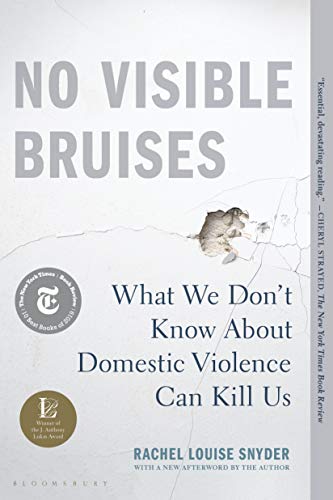What We Don’t Know About Domestic Violence Can Kill Us”
What do we know about domestic violence? What do we truly know about what happens behind closed doors if we have not experienced it first hard? In Rachel Louise Snyder’s new book “No Visible Bruises: What We Don’t Know About Domestic Violence Can Kill Us”, she dismantles the myths that surround domestic violence. Her book aims to answer and bring to light the cruel reality of a broken system and what the WHO has called “a global health problem of epidemic proportions.” In America alone, more than half of all murdered women are killed by a current or former partner.
Domestic violence does not work in a vacuum; it is not an isolated act but has other phycological dynamics that link to other problems like mass shootings and is a direct cause of homelessness for more than half of homeless women. Rachel also dismantles a prevalent question that even I used to ask myself, and that is “why do they stay?” Why do these strong women that are being violated physically and/or psychologically stay? Why don’t they just leave? Rachel puts it perfectly in this book that “we mistake what we see from the outside as her choosing to stay with an abuser, when in fact it’s we who don’t recognize what a victim who is slowly and carefully leaving actually looks like.”
Victims time and time again receive the insidious message that the system is not built for them, for their protection. It is visible when the court system puts them on the defensive, ask them to face a person who might have tried to kill them, and might do it the next time. It is visible in court rulings when they give violent perpetrators a slap on the wrist, a small fine, or just a few days in jail after a brutal assault. It is particularly visible when law enforcement treats domestic violence as a nuisance, a “domestic dispute” when in reality it is “intimate partner TERRORISM” as Rachel puts it. A United Nations report in 2018 put it starkly: The most dangerous place for a woman is her own home.
There is much that needs to be done and can be done. Rachel takes us through history, like the Violence Against Women Act in 1994, and gives us a series of steps that can save lives today. We can train clergy members and doctors to recognize and respond to domestic violence. Promote battering intervention programs. Treat restraining orders like D.U.I.s and keep them on file, even after they have expired. Teach police to recognize the signs and instruct doctors to assess women for traumatic brain injury. There is much that needs to be done and the first step is learning and acknowledging the grievousness of domestic violence. It is time to take a stand for all women that are or have been victims of domestic violence. It is time for change.

Rebeca Espinoza
Public Relations and Marketing











